What happens if a battlefield tactical nuclear weapon explodes? There are no such things as tactical nuclear weapons. These horrific bombs are weapons of mass destruction that have been renamed.
Nuclear horror is discussed in this Op Ed, this article is extremely graphic, and graphic descriptions may be very offensive to some people. A less graphic Op Ed was declined by multiple news outlets after publication of this Op Ed. A copy of this shorter version is available in the OpEdNews Comments to this article.
For years, the press and governments have referred to atomic bombs as battlefield tactical nuclear weapons, and the devastation from such weapons is horrendous. To end the unprovoked Second World War ("The Rise and Fall of the Third Reich", William Shirer), the only nuclear weapons ever used on people were detonated at Hiroshima and Nagasaki in Japan (Figures 1 and 2). Estimates vary for the number of dead, but death estimates exceed 200,000 people for these two cities, where the number of people burned to death could not be confirmed ("The Making of the Atomic Bomb", by Richard Rhodes).
Talk in the press of a possible use of tactical nuclear weapons in Ukraine and North Korean nuclear weapons missile testing ignites interest in this explosive topic. Ukraine blasts into the news with analyses such as "Explainer: How real are Putin's nuclear threats in Ukraine?" (Click Here), and "Exclusive: As Ukraine Gets Closer to Victory, Nuclear War Gets Closer Too" (Click Here).
The North Korean nuclear missile program explodes forward at the same time. Concerns are raised in "North Korea's Kim threatens to use nukes amid tensions with U.S., South Korea" (click here), and "What North Korea learned from Ukraine: Now's the perfect time for a nuclear push" (click here).
A Rekindled Fear of Nuclear Weapons
The fear of nuclear war has grasped the headlines, and we are uncertain if nuclear blasts are imminent, where "Biden believes Putin won't use nuclear weapons on Ukraine" (click here). We are uncertain of a scary nuclear weapons future, 'while long- and medium-range nuclear systems have been constrained or eliminated by arms control treaties, tactical nuclear weapons have never had verified limits' (.ucsusa.org/resources/tactical-nuclear-weapons).
Threats are reported. The "European Union: 'Russian Army will be annihilated' if Putin uses nuclear weapons" (Click Here). Furthermore, military nuclear forces are strengthened as "Kim Jong Un talks up North Korea's nuclear threat after latest missile tests". Kim stated that 'Our nuclear combat forces' 'proved again their full preparedness for actual war to bring the enemies under their control' (click here).The Horror of Tactical Nuclear Weapons
The definition, and horrific devastation, of a tactical nuclear weapon may escape some of us. Al Jazeera published an article 'What are nuclear tactical weapons, will they be used in Ukraine?' (Click Here). That article stated that 'Many of the world's nuclear powers have weapons that are considered low-yield or meant to be used on the battlefield'. This apparent acceptance of such weapons to be used to kill people overlooks the terrible consequences of using these weapons.
The 1945 bombs at Hiroshima and Nagasaki fall into the general classification of low-yield tactical nuclear weapons. Such attacks are not accepted as battlefield strategies. Yet, tactical weapons capable of destroying cites are available in nuclear arsenals for military use.
We need to clearly understand the overwhelming terror of these weapons. While tactical weapons are stationed in many countries, these weapons have never targeted people. The nuclear horror for people trapped inside a nuclear blast describes pain and anguish beyond belief. Accordingly, brief descriptions of tactical nuclear weapons and their human devastation are provided here.Bigger Bombs Kill More People
Horrors of World War II preceded the atomic bomb. Carpet bombing was executed against cities in Europe and Japan. More than 20,000 people were killed during three days of bombing in Dresden, Germany, and more than 80,000 people were killed during two days of bombing in Tokyo, Japan ('Bombing of Dresden', click here, Bombing of Tokyo, www.britannica.com/event/Bombing-of-Tokyo). Incendiary bombs were dropped from aircraft to blanket cities in flame to burn as many people to death as possible. People who hid in basements suffocated to death as the roaring firestorms above sucked up all of the oxygen needed to breathe.
Exploding into the future from these firestorms, atomic bombs explosively forced uranium or plutonium together to generate massive releases of energy and atomic particles at temperatures at millions of degrees centigrade at the center of the explosions. These weapons were detonated above the ground to cause maximum destruction and death.
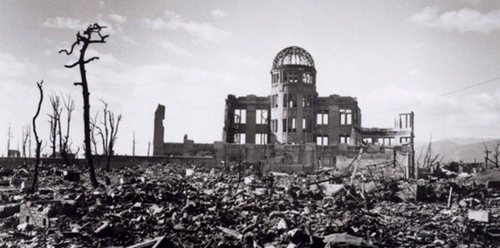
Figure 1: Part of Downtown Hiroshima after the Atomic Bomb
(Image by Japanese government) Details DMCA

Figure 3: Artillery shell loading - 1953, 15 kiloton, U.S. nuclear weapons test
(Image by U.S. Government) Details DMCA
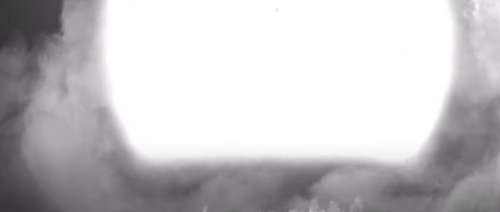
Figure 5: Initial nuclear explosion blast of light prior to an explosive blast wave from a nuclear weapon, where a blinding light was much brighter than shown - 1953, U.S. nuclear weapons test
(Image by U.S. Government) Details DMCA
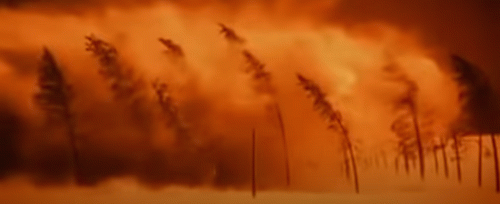
Figure 7: Nuclear winds followed an initial blast wave, or shock wave, where shock waves are only a few molecules thick - 1953, U.S. nuclear weapons test
(Image by U.S. Government) Details DMCA
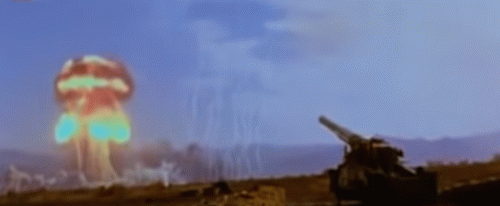
Figure 8: Mushroom explosion, as burning materials rose into the sky, 11 seconds after the detonation of the bomb - 1953, U.S. nuclear weapons test
(Image by U.S. Government) Details DMCA
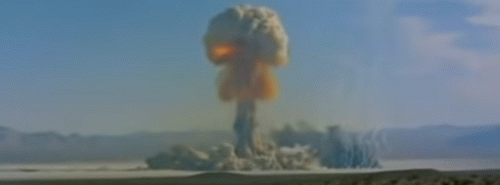
Figure 9: Mushroom cloud, as radioactive dust to create radioactive fallout rose into the sky, 18 seconds after detonation - 1953, U.S. nuclear weapons test
(Image by U.S. Government) Details DMCA
Hiroshima and Nagasaki, the Only Nuclear Bomb Explosions That Killed and Maimed People
John Hersey's book "Hiroshima" describes the Hiroshima bombing, where the scope of death and destruction was similar at Nagasaki. To help explain the Hiroshima nuclear explosion, a comparable U.S. nuclear explosion test is shown in Figures 3 - 9. Each figure shows one moment of an atomic bomb explosion. Both the Hiroshima explosion and this test explosion were equivalent to 15-ton TNT explosions.
At Hiroshima ground zero, directly underneath the blast, a painter was working on a ladder. He, and many others, were vaporized, and turned into gas particles. That painter's shadow was burned into the sidewalk by the intense blast of energy (Figure 5).
After the bomb exploded, an explosive pressure wave blasted outward from the bomb site. The blast wave was immediately followed by a high-temperature heat wave (Figure 6). A nuclear wind followed the blast wave and heat wave in a direction away from ground zero (Figure 7). These waves and the nuclear wind were deadly and destructive.
Following the deadly explosive pressure wave, heat wave, and, nuclear wind, the now famous mushroom cloud exploded into the sky (Figures 8 and 9). As this cloud formed, air was sucked back to ground zero and upwards to cause a second nuclear wind. This second wind rushed in the opposite direction of the first nuclear wind to cause even more devastation.
These devastating seconds in Hiroshima unveiled the atomic bomb to the world. At ground zero everything is obliterated, e.g., people, buildings, property, and wildlife. At a distance from ground zero, the explosion wave loosened the skin of people, and the following heat wave melted the skin from their bodies. Sheets of skin from their chests and backs hung from their belts down to near their knees - as they walked in bewilderment to what had just happened to them. People at further distances from ground zero felt liquid running down their face, as their eyeballs melted from their eye sockets. At even further distances, people were blinded who looked into the nuclear blast.
These are the immediate effects of tactical nuclear weapons. Disfigurements of the human body by nuclear blast detonations and heat waves clearly meet the definition of horror. Per Merriam-Webster, the meaning of horror is painful and intense fear, dread, or dismay.
Even Bigger Bombs Can Kill Even More People
Note the relatively small size of the immensely destructive 15-kiloton bomb in Figure 3. Technology reduced the size of the Hiroshima bombs, shown in Figure 10. Technology also increased the destructive energy of nuclear weapons.
Russia developed the 1-gigaton (1 million kiloton) Tsar Bomba hydrogen fusion bomb. This Russian bomb is the largest nuclear weapon ever exploded (Russia releases secret footage of 1961Tsar Bomba hydrogen blast, Click Here). The explosive energy of this bomb is 66,667 times the explosive energy of the Hiroshima bomb (Figure 11). During the Cold War, our government leaders invested extraordinary amounts of time and money to be able to blow each other up.
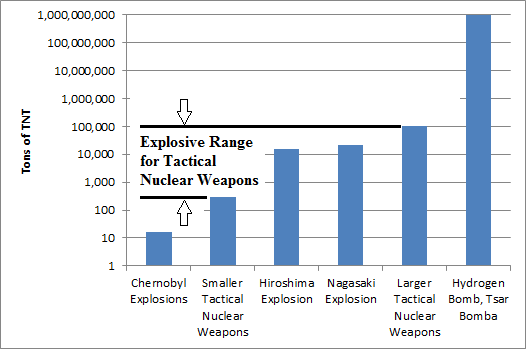
Figure 11: Comparison of Nuclear Explosion Payloads
(Image by Leishear Engineering, LLC) Details DMCA
Atomic bombs and hydrogen, thermonuclear bombs release great amounts of energy and radiation. Atomic bombs use nuclear fission to split uranium or plutonium into many chemical elements. Hydrogen bombs use fission - an atomic bomb trigger - to provide sufficient energy to generate a nuclear fusion reaction, which creates helium molecules. Hydrogen bombs generate far greater explosions than atomic bombs (us.com/physics/hydrogen-bomb). Tactical weapons are atomic bombs.
A Definition of Tactical Nuclear Weapons?
Tactical nuclear weapons today can cause greater destruction than the bombings of Hiroshima or Nagasaki. Short-range nuclear missiles travel less than 620 miles (1,000 km), and long-range missiles can travel thousands of miles. Short-range missiles or artillery can deliver tactical nuclear weapons.
'Tactical nuclear weapons, also called nonstrategic nuclear weapons, are generally designed for battlefield use and have a shorter range than strategic, or long-range, nuclear weapons, which are designed to directly attack an adversary's homeland. Some analysts describe tactical nuclear weapons as intended to win a battle, while strategic weapons are intended to win a war.' 'Bottom line: there is no universal definition of tactical nuclear weapons.'
Even though the exact definition of tactical nuclear weapons is unclear, one fact is clear. Artillery (Figure 4) and short-range missile tactical weapons have the capabilities to destroy cities and kill hundreds of thousands of people - in a matter of seconds. Incorrect reports in the press state that such weapons would be easily detectable, but nuclear weapons capable of destroying cities are available in the size of an artillery shell.
The Magnitude of Tactical Nuclear Weapons
A tactical battlefield-weapon payload can be larger than 100 kilotons of TNT - or 100,000 tons of TNT - where the people of Hiroshima felt a 15-kiloton bomb. ("Here's What Would Happen If Putin Ordered a Nuclear Strike in Ukraine", Click Here). By comparison, the Chernobyl nuclear power plant exploded at less than 16 tons of TNT - not kilotons (Leishear, "The Autoignition of Nuclear Reactor Power Plant Explosions", Click Here, "Stop a Potential Radioactive Europe and Russia, A Letter to Energoatom, The Ukraine Nuclear Power Company", click here"'). Nuclear power plant explosions are inherently dangerous, but these dangers describe only a fraction of the devastation that can be caused by tactical nuclear weapons.
Today, the payloads, or explosive yields, of tactical nuclear weapons can vary from less than one kiloton of TNT to more than a hundred kilotons of TNT for tactical missile warheads. Strategic bombs can have equivalent TNT payloads over a thousand kilotons (Click Here). Even a 0.3 kiloton tactical nuclear weapon has more than 12 times the explosive energy of Chernobyl nuclear reactor explosions.
Strategic and Tactical Nuclear Weapons
Considering the complex issues that are facing us, mention of the worldwide nuclear arsenal is warranted. 'The United States and Russia hold 90% of the world's stockpile of almost 13,000 nuclear weapons. Neither has the capability to wipe out the other's nuclear arsenal in an initial attack. Both countries understand that any use of strategic nuclear weapons would invite a nuclear counterattack, and the potential of a civilization-ending nuclear exchange.'
The attacks on Dresden, Tokyo, Nagasaki, and Hiroshima have been referred to as strategic bombings, where treaties were reached, which were related to such attacks. Some pertinent treaties are discussed in the "U.S. Incendiary-Weapons Policy Rebuffed" (Click Here) and the "Nuclear Non-Proliferation Treaty" (.state.gov/nuclear-nonproliferation-treaty).
The Non-proliferation Treaty shares nuclear technology among member nations to advance the peaceful use of nuclear technology to produce nuclear energy to run our businesses and heat our homes, provided that the technology is not used to create nuclear weapons. North Korea signed the Treaty, developed nuclear technology with shared nuclear information, withdrew from the Treaty, and built atomic and hydrogen bombs.
'The United States has about 200 tactical nuclear gravity bombs with explosive yields adjustable between 0.3 and 170 kilotons.' 'Russia has nearly 2,000 tactical nuclear weapons with a broad range of yields, from very low to over 100 kilotons' (Click Here). Active U.S. B-83 bombs have payloads of 1200 kilotons each (Click Here). This payload is 80 times the explosive energy of the Hiroshima atomic bomb!
Weapons of Death and Destruction
Weapons of mass destruction overwhelm the senses when trying to understand the full scope of anguish and death. Technically, the full scope of destruction and radioactive fallout cannot be known in advance for so-called tactical nuclear weapons. Pulling the tail of the nuclear dragon can be extremely dangerous, given that the size of this dragon of war is not known.
As an engineer, I focus on technical issues. To advance technology, I prefer to stay out of the political issues, which I have little influence over. However, the word "horror" is certainly political, rather than scientific. Such a word elicits emotional responses, which are certainly not scientific. Even so, my nuclear research over the past years provides insights into the personal side of this issue. In my opinion, the human side of these dangerous weapons is being glossed over by the press.
A nuclear bomb mushroom cloud is a common image in our lives, and the press diminishes the dread of the term tactical nuclear weapon. Such a monstrous bomb designed to instantaneously snuff out and destroy so many lives needs graphic comprehension. Words cannot convey to us the shear horror of these tactical and strategic bombs that rip through flesh, shatter bones, vaporize people, and burn people to death. To convey this message, I wrote this article.
Recently, the term 'airburst' has also been applied to atomic bombs, making these weapons sound more like common fireworks. These atomic bombs are detonated in the air to ensure that more lives are extinguished.Tactical Nuclear Weapons = Nuclear Horror
TNT equivalents for tactical nuclear weapons range from a fraction of a kiloton to more than a hundred kilotons of TNT; Hiroshima exploded at 15 kilotons of TNT, and Nagasaki exploded at 21 kilotons of TNT. That is, a single tactical nuclear weapon can devastate an entire city or only part of that city, depending on the payload of the chosen destructive force, and depending on the targeted population.
In closing, the purposes of tactical nuclear weapons are to kill people, to instill fear, to win battles in war, and to destroy property. Nuclear horror is a stark and inevitable consequence of these goals if achieved.
Addendum: A Continued Cavalier Use of The Term "Tactical Nuclear Weapons" (10/15/2022)
Different people look at the world differently. However, this article clearly proves that tactical weapons are weapons of mass destruction that can devastate lives in an unimaginably horrible fashion. The press continues to downplay this horror, e.g., "High stakes gamble: Putin's tactical nuclear options", where nuclear horror is considered to be a military option. (Click Here). Furthermore, statements in such articles are questionable, e.g., 'Every major Russian setback triggers heated global discussion on whether Putin will resort to using tactical nuclear weapons in order to reverse the course of the war and re-establish Russia as a great power rather than a humiliated giant'.
Hopefully, nuclear weapons will never be used against people. Some people believe that "Crisis is considered unlikely but officials re-examine plans to provide support for fearful populations" (Click Here). Others believe that the "'Russian Army will be annihilated' if Putin uses nuclear weapons" (click here).Even so, a single so-called tactical nuclear weapon can kill every man, woman and child in a city. A tactical weapon can explode ferocious damage into the lives of the victims. A tactical weapon can be small to reduce the number of mass killings, a nuclear bombs can be fired from cannons, and a single so-called tactical bomb can detonate more than six times the explosive force of the bomb dropped on Hiroshima.
Will a 'great power' commit such a mass horror of misery and death? Would such a use of nuclear weapons be a despicable atrocity? Would such a use of nuclear weapons be tantamount to mass murder? Would such a use of nuclear weapons be tantamount to a war crime? These are scary times, and dismissing tactical nuclear weapons as a reasonable means of establishing 'power' is beyond reason.
Addendum: The Press Refuses to Condemn Nuclear Weapons (10/16/2022)
The press will condemn Russia for considering the use of nuclear weapons, but the press will not condemn the use of these weapons. To many people, fears of nuclear power plant explosions and exploding nuclear weapons are part of the same nuclear energy problem. Many mainstream news agencies refuse to publish the information provided here. I thought that the press simply overlooked the gravity of nuclear horror, but actions over the past few days conclude that the press understands this horror, but does not want the general public to understand the terror of tactical nuclear weapons that are deployed in many countries.
The explanation that makes sense is that the press and the nuclear industry do not want to affect the multi-billion dollar per year nuclear industry. In 2021, the equipment market alone exceeded $24 billion (click here). Some nuclear reactors can generate $1 million per day. There are approximately 440 different size nuclear power plants in different countries, and other nuclear plants are under construction. The actual worth of the nuclear industry is difficult to discern, but this approximate information implies that the industry may have a worth of as much as $1 trillion over 7 to 10 years.
I asked multiple news outlets to publish a less graphic Op Ed, which was excerpted from this Op Ed. They all refused, where those outlets included the Wall Street Journal, the Washington Post, the Hill, Foreign Policy, Politico, the Los Angeles Times, the New York Times, the Boston Globe, and the Associated Press. This Op Ed presently stands alone to describe this nuclear horror.
Fortunately, OpEdNews allowed freedom of speech through freedom of the press to discuss this horrific threat to the lives of our citizens. Unfortunately, OpEdNews has a limited readership, compared to mainstream news outlets. News giants, the press, effectively censor such important information.
In this series of Op Eds, I have made numerous accusations. I contacted and accused the NRC of covering up Three Mile Island explosions. The Chairman of the NRC refused to act. I contacted and accused the ANS, the IAEA, the NRC, the NEA, and the DOE of covering up new ways to stop future nuclear power plant explosions. The Secretary of Energy, the Director-General of the NEA, and past and present presidents of the ANS refused to act to stop the next imminent nuclear power plant explosions. I contacted and accused many news outlets of censoring information that can stop future nuclear power plant explosions. I contacted and accused the IAEA, the United Nations, multiple news outlets, and Ukraine of ignoring ways to prevent potential nuclear power plant explosions if nuclear plants are rendered out of service through acts of war. They all refused to act to stop potential nuclear power plant explosions.
The guardians of the nuclear industry reputation are the same guardians of nuclear safety. These guardians choose to protect the nuclear industry reputation over enforcing safety and protecting lives. These guardians choose economics over lives.
Right here, right now, I accuse the press and the nuclear industry of covering up, or censoring, the tangible horrors of nuclear weapons. The ANS declined to reprint this article since they focus on the peaceful use of nuclear energy. The press has the option to prove these claims of their censorship to be wrong, where the press can reprint all or part of this publication to permit the general population to see the facts.
We do not know how dangerous the nuclear future will be. Different interpretations of events are published every day. "60 years after the Cuban missile crisis, the nuclear dangers posed by the war in Ukraine are 'far worse,' experts warn" (click here).
The press, and I, provide pictures of mushroom clouds that are second nature to many of us. Photos and videos of atomic and hydrogen bombs exploding into the air are visually impressive and eye-catching. However, these photos are no longer very scary to us, and the press dismisses the actual terror that such nuclear bomb clouds can rip into the lives of real people. Real bombs destroy real people.
Addendum: Never Give An Inch (10/18/2022)
The mainstream press, nuclear industry regulators, and nuclear power plant operators have effectively blocked widespread public communications of important nuclear safety information, which affects our lives. During the past two years, I have published 15 Op Ed News articles and multiple engineering journal papers on the dangers of nuclear energy and nuclear weapons. All of these articles to protect lives have been blocked by the press and the nuclear industry wherever possible.
The approach of the nuclear industry is to ignore potential deaths and destruction. If they ignore the problems, then they do not need to worry about deaths, and a radioactive environment, until after explosions happen. Then, they can say "Oops, people died, and mass evacuations were required. We should investigate". Their lack of action and ongoing deceit should be investigated before disaster strikes.
In most cases, letters are simply ignored, but in one case, the ANS answered, and their response is attached to this OpEd as a Comment. My response to the ANS was that "I will continue to fight against organizations like the ANS who refuse to properly consider new technology to improve nuclear safety, and stop the next nuclear power plant explosions. The stakes are too high".
(Article changed on Oct 18, 2022 at 5:50 PM EDT)








